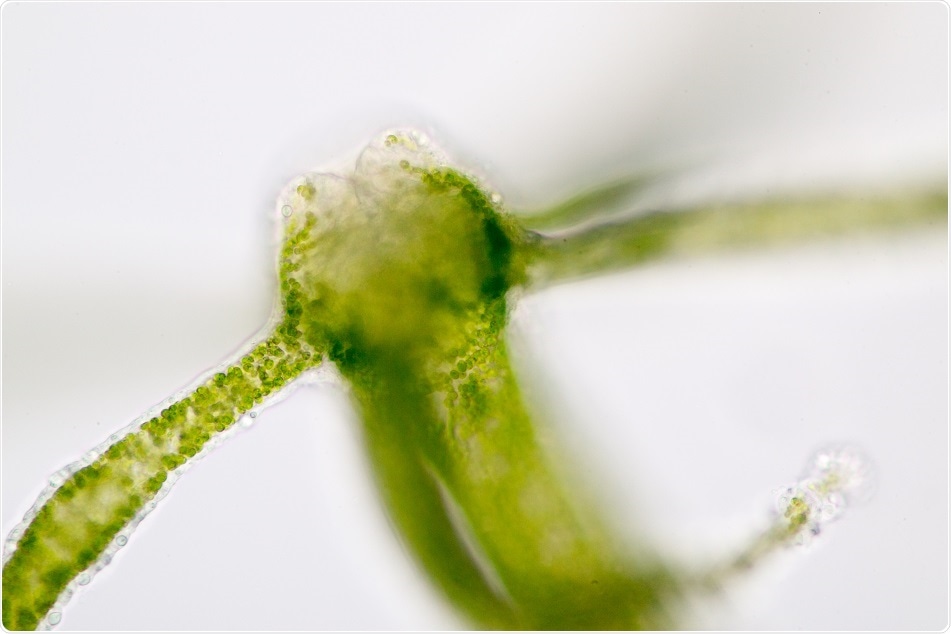Nov 23 2017
A new study, conducted at Kiel University (CAU) by a research team from the Cell and Developmental Biology (Bosch AG), reveals that bacterial colonization of the intestine plays a significant role in controlling peristaltic functions.

Researchers observed the mechanism of peristalsis regulation in freshwater polyp Hydra. Credit: Rattiya Thongdumhyu/ Shutterstock.com
The study shows the association between microbiome and tissue contractions, which are essential for healthy bowel functions.
Pacemaker cells in the nervous system are triggers for the usual spontaneous contractions of the muscle tissue. These pacemaker cells emit electrical impulses in a particular rhythm and without any external stimulation, which ultimately reaches the smooth muscles of the intestinal wall, causing them to contract.
The intensity and frequency of these impulses are dependent on external influences, though they occur by themselves.
The example of the simple freshwater polyp Hydra has shown us that the bacterial colonization of the organism can affect the contractions of its digestive cavity. Most likely they do so by modulating the underlying pacemaker signals."
Professor Thomas Bosch, the Collaborative Research Centre
Hydra have no bowel, unlike other more complex organisms. Their simple body cavity functions as their digestive tract; the surrounding tissue also presents the usual contractions linked to more highly developed intestines.
To determine the mechanism of peristalsis regulation in freshwater polyps, the scientists compared normal Hydra with usual bacterial colonization against those that had their microbiome completely removed using an antibiotic cocktail.
The results concluded that the organisms without bacterial colonization, also known as germ-free polyps, indicated a decrease in contractions by about half. Meanwhile, there was disruption in the rhythm of the movements, and some of the breaks between the contractions were much longer than usual.
Thus, the peristaltic movements in the body cavity were compromised by the absence of the usual microbiome in Hydra.
In addition, the researchers restored the particular bacterial colonization in the germ-free organisms. First, the researchers introduced each of the five most common bacterial species present in the Hydra microbiome individually back into the sterile polyps. It was observed that this individual bacterial colonization had no considerable impact on the timing and frequency of contractions.
Only the joint reintroduction of the five main microbiome representatives resulted in a significant improvement in peristalsis, although even then, the contraction pattern was not completely normalized. Remarkably, an extract produced from the colonizing bacteria exhibited a similar positive influence.
From the study, researchers concluded that only the natural Hydra microbiome—characterized by a balance between the presence of bacterial species—can play a significant pacemaker role in peristalsis. Researchers identified that, in this case, certain molecules secreted by the bacteria can interfere in the pacemaker cell control mechanism.
In essence, bacterial signals can have a significant impact on the spontaneous peristaltic contractions pattern. Bosch emphasized that the researchers were able to demonstrate for the first time that the microbiome has a crucial function in the timing and frequency of tissue contractions.
The researchers concluded that in the future, these findings will help us to understand the emergence of severe diseases, which arise from disrupted intestine movement.
Source: